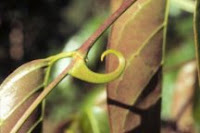 |
My teacher don Roberto Acho knows hundreds of plants, at least in the sense that he is familiar with that many, in the same way that a biomedical physician probably knows hundreds of medicines. I think most shamans — like most biomedical physicians — regularly use a few dozen plant medicines in their everyday routine practice, and go outside that number only in difficult cases, perhaps after consultation with a specialist. Even so, I have often wondered how a shaman remembers all those plants.
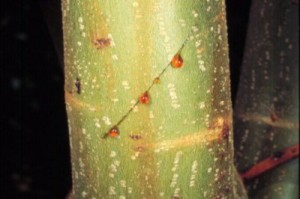 |
The doctrine of signatures is often attributed to Paracelsus, and was pervasive in Europe by the sixteenth century. The doctrine asserts that the inner virtues of a plant are manifest in its signature or outer appearance — that God has mercifully ordained that humans can read the healing powers of plants from their physical characteristics. For example, according to a seventeenth-century herbal, we can know that St. John’s wort is good for cuts and wounds because the leaves have holes in them, and the flowers, when putrefied, look like blood, “which teacheth us, that this herb is good for wounds, to close them and fill them up.”
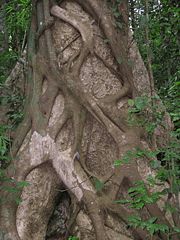 |
Thus, too, the yellow color of saffron suggests that it is useful for jaundice; the brain-like surface of a walnut indicates its value for head ailments; and the spotted leaves of lungwort, appearing like pulmonary disease, indicate its potential to cure chest complaints.
Mestizo shamans apparently inherited the doctrine of signatures from Hispanic culture. I have found little evidence of any indigenous Amazonian equivalent of this way of viewing plants. William Balée, in his extensive study of Ka’apor ethnobotany, devotes several pages to the doctrine of signatures, only to conclude that, by and large, the doctrine does not apply to Ka’apor medicinal plant use.
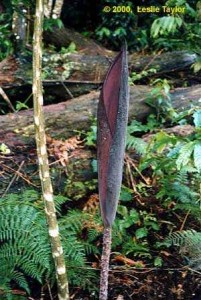 |
Most mestizo shamans use — but do not articulate — the doctrine of signatures. For example, plants that cling, such as lianas and vines, are often used for pusanguería, love medicine, especially the renaco, strangler fig (Ficus americana), which clings to its support tree like a devoted lover. Amor seco (Bidens alba) has small prickly leaves which cling to the clothing or skin of passersby, and is similarly considered useful in love medicine. The plant called sacha corazon (Caladium spp.) has heart-shaped leaves and clings to the trunks of trees; it is thus used not only in love medicine but also in the treatment of diseases related to the heart and blood.
But, in the Upper Amazon, the system is probably more mnemonic than it is philosophical. Signatures provide a way to remember the uses of a plant. Here are some more examples.
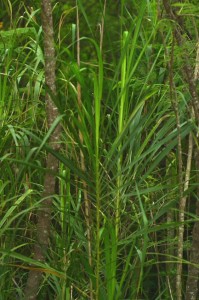 |
- Caña brava, giant cane (Gynerium sagittatum), can grow more than thirty feet tall, straight up from the ground, even pushing its way through other plants — como hombre muy macho, my teacher doña María Tuesta taught me. It is thus used to treat hombre caido, erectile dysfunction.
- Uña de gato, cat’s-claw (Uncaria guianensis), is a vine whose stems have small hook-like appendages, so the plant is used to claw out tumors and inflammations.
- Shimipampana, arrowroot (Maranta arundinacea), has a root that is considered to look like a fist, and therefore is used as a pusanga to tame a an ill-tempered or jealous spouse or, made into a lotion and applied to the face, to guarantee success in business or in litigation.
- Sangre de grado, dragon’s blood (Croton lechleri), is a tree whose red latex looks like blood and thus used to treat wounds, ulcers, and skin infections. I have also often heard the sap referred to as sacha iodo, jungle iodine. This is a new signature; the sap is good for wounds because it resembles the iodine of biomedicine.
- Jergón sacha, jungle viper (Dracontium loretense), is a shrub with a brown-green-gray mottled stem that resembles the skin of several South American pit vipers. A drink made from the root is used to treat snakebite, or the root may be heated and pressed directly on the wound.
Okay, here is a test. All the plants pictured here have been discussed in the text. Can you now connect each plant with its medicinal use just by looking at it? Place your mouse cursor over the picture for the correct answer.

- Previous Post: Another Icaro, Modernized
- Next Post: Cleansing the Pope
- More Articles Related to: Indigenous Culture, Plant Medicine, Sacred Plants, Shamanism, The Amazon


